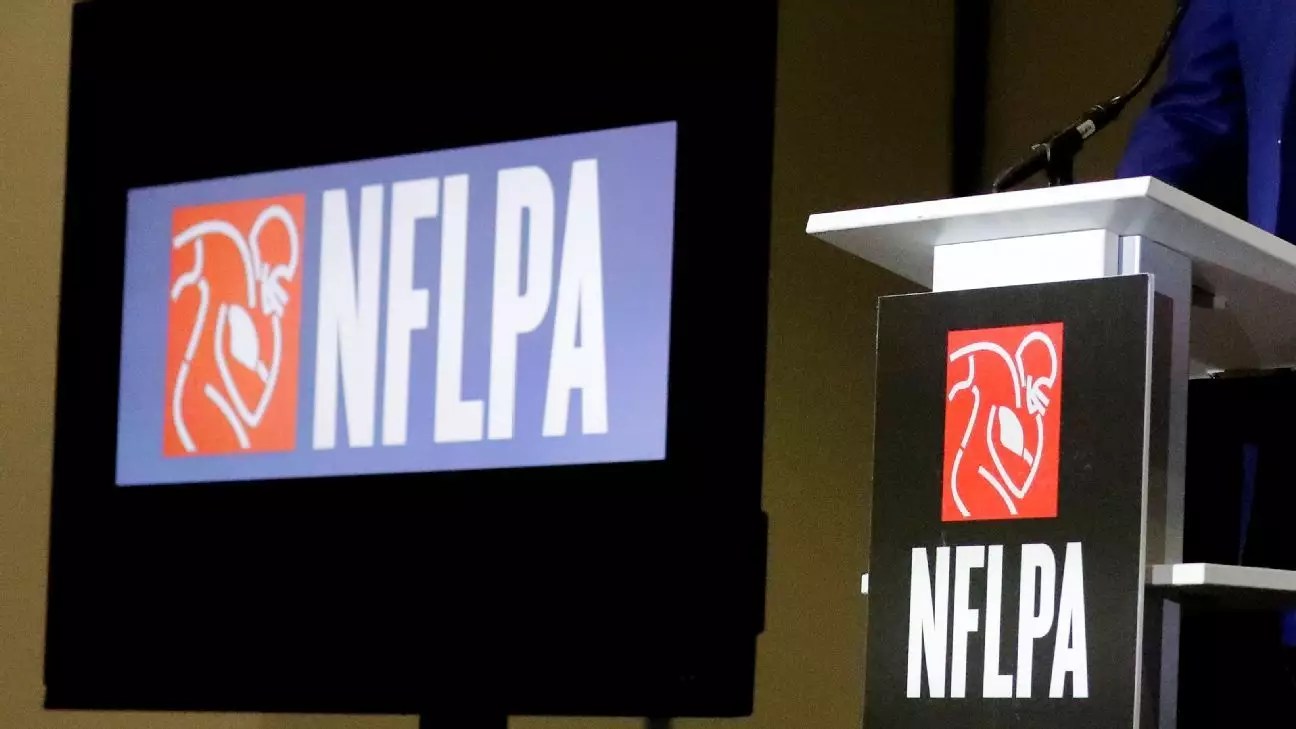The recent appointment of David White as interim executive director of the NFL Players Association (NFLPA) offers an unsettling glimpse into the fragile state of union governance within professional sports. With the abrupt resignation of Lloyd Howell Jr. amid controversy, the NFLPA’s leadership structure reveals more cracks than stability. White’s selection is not just a routine interim fix; it exposes the union’s challenge in cultivating authentic, trustworthy leadership amid turbulence. In a landscape riddled with financial interests, hidden agendas, and damaged credibility, this appointment feels like a band-aid over a festering wound rather than a genuine step toward reform.
What is striking is the process by which White ascended to this interim role. Despite not being on the confidential shortlist that initially circulated, his appointment raises questions about transparency and accountability. It appears to echo a familiar pattern in union politics, where insiders and politically connected figures are favored over viable outsiders who might push for real change. This is deeply problematic for a union claiming to represent the interests of a diverse and increasingly vocal membership—it suggests that power remains concentrated and insulated from the very athletes it is supposed to serve.
The Illusion of Player-Led Democracy
The NFLPA claims its strength lies in its ‘player-led’ structure, yet recent events cast doubt on this narrative. The process for selecting leadership seems shrouded in secrecy, with candidates interviewed behind closed doors and decisions seemingly influenced by a handful of insiders. Even when the union boasts that the membership is at the core of decision-making, the reality hints at a controlled environment where influential figures hold sway, often under the guise of democratic procedure.
This disconnect highlights a critical flaw: the superficial appearance of transparency masks an underlying oligarchy that maintains its grip on power. The fact that the executive committee’s preference was seemingly overridden or sidelined in favor of chosen insiders indicates a leadership culture driven more by internal politics than by a genuine desire to prioritize players’ needs. This distinction becomes even more significant considering the union’s ongoing challenges—health concerns, financial security, and reputation issues stemming from scandals and internal strife.
Distorted Priorities and the Myth of Stability
What stands out most in this leadership shuffle is the failure to address fundamental issues that undermine the union’s credibility. The Howell saga exposes how quickly trust erodes when leadership is perceived as compromised or entangled in outside interests. ESPN’s reports on Howell’s alleged ties to private equity interests and questionable expenses significantly tarnished the union’s reputation. Trust, once shattered, is rarely restored quickly or easily, and the NFLPA’s repeated struggles to maintain integrity point towards a leadership crisis cloaked in feigned stability.
The appointment of White, with his background in labor and high-profile union leadership in entertainment, seems to have been motivated less by an alignment with players’ core concerns and more by a strategic desire to stabilize the union temporarily. There’s a dangerous misconception here: that external experience alone equates to effective union leadership. But unions are fundamentally about grassroots advocacy and authentic representation—qualities that cannot be imported from corporate boardrooms or boardrooms that have long lost sight of the members’ interests.
The Road to Authentic Reform is Still Out of Reach
While the union leadership touts a process of a “player-led” search for a permanent director, skepticism remains justified. The early signs point to continued internal power plays and inadequate efforts at transparency, suggesting that the core issues—trust, influence, and accountability—are still unaddressed. The current leadership’s focus on stability may be superficially appealing, but it risks delaying the necessary upheaval to truly democratize the NFLPA.
Progress requires more than just internal elections and interim appointments; it demands a fundamental reevaluation of how the union operates and whom it truly represents. The real reform lies in empowering players to challenge the entrenched hierarchy, pushing for transparent processes that allow genuine outsider voices to enter the fold. Without this, the NFLPA risks becoming a pawn in larger economic and political games that serve interests far removed from those of everyday players.
Furthermore, the scandals that led to Howell’s departure—conflicts of interest, questionable expenses, and secrecy—underline the urgent need for structural change rooted in accountability. The union’s credibility hinges on its ability to confront these issues head-on, resisting superficial leadership changes that merely serve to patch rather than heal the deeper systemic wounds.
The NFLPA’s recent leadership developments underscore a critical truth: proper union reform cannot be achieved through convenience or superficial fixes. The appointment of David White, though seemingly a step toward stability, raises fundamental questions about transparency, influence, and authentic representation. Until the union embraces genuinely democratic processes, and prioritizes rebuilding trust over protecting internal elites, it will remain vulnerable to failures that threaten its very existence. The players deserve a leadership that is committed not just to appearances but to real, substantive change—an urgent necessity for revitalizing the union’s credibility and power in an era of heightened scrutiny.

